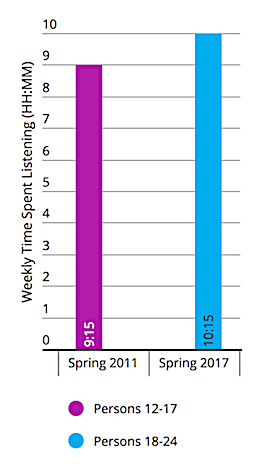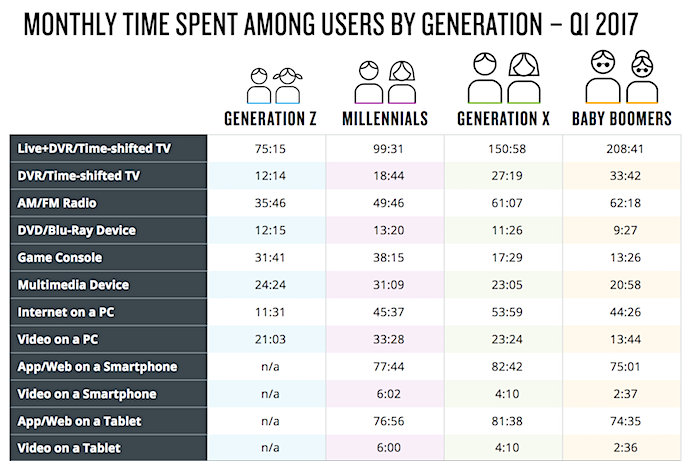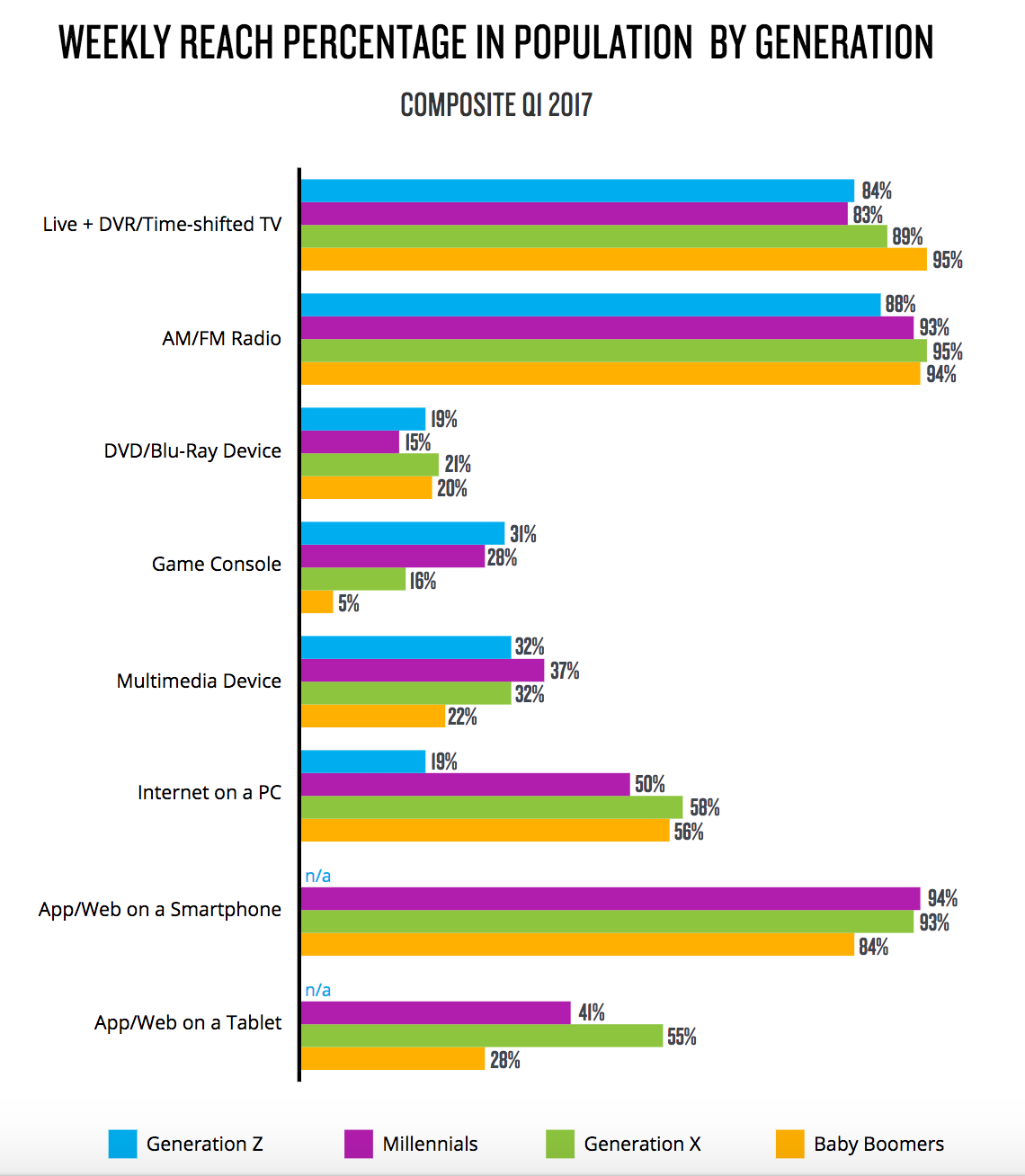A strange thing happened on the way to adulthood for American teenagers… they started listening to more radio.
The latest Nielsen Total Audience research report for Quarter 1 2017 has compared Generation Z listening now, to their listening habits five years ago.
When these Generation Z listeners were aged 12-17 years old they listened to 9 hours and 15 minutes of radio. Good old AM/FM radio, not internet radio, music streaming services or satellite radio, just terrestrial live broadcast radio.

Five years later those teenagers are now aged 18-24 and their radio listening has gone up by one hour. They now spend 10 hours 15 minutes listening to live broadcast radio.
“In other words, when teens grow up, they spend more time listening to the radio.” concludes Nielsen.
Generation Z is people born between 1997 to 2015 (age chart below details the generation breakdowns)

The research company speculates that the increase in listening time has something to do with employment. 64% of 18-24 year olds are now employed, according to Nielsen. Now that people have jobs they spend more time commuting and listening to radio during their commute.
Could be.
But could it also be that broadcast radio has lifted its game in America and has succeeded in engaging younger listeners more?
According to the report, radio now reaches 88% of Generation Z and 93% of Millennials each week.
The amount of time spent listening to radio each day also increases as you compare generations from younger to older. Millennials spend about 30 minutes more each day listening to radio than Generation Z.
Monthly TSL to traditional broadcast radio ranges from 35 hours and 46 minutes for Generation Z to 62 hours 18 minutes for Baby Boomers (see chart below). TV has the biggest share of time spent with that medium in America.

Penetration (reach) of AM/FM radio is still strong across the generations (88% for Gen Z to 94% for Baby Boomers). Penetration of television is about the same as that of radio and penetration of smart phones is the is higher than radio and tv for Millennials (Gen Z data unavailable) and a bit lower for Baby Boomers.
Nielsen says: “When we look at how Generation Z and younger Millennials interact with media, it’s easy to assume that these habits don’t include traditional mediums alongside the new ones. That’s where data can help separate the reality from the speculation.”


